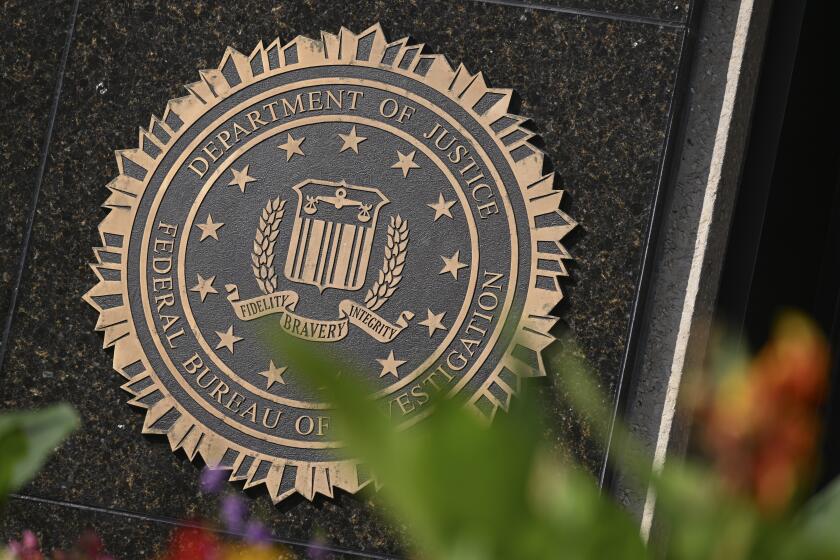EPA Plans ‘Cap-and-Trade’ Mercury Emission Reduction
The Bush administration on Monday proposed a market-based system of pollution controls designed to reduce mercury emissions from coal-fired power plants by nearly 70% over the next 15 years.
The administration simultaneously proposed an alternative approach that would reduce the emissions by 29% by the end of 2007 using a traditional regulatory system requiring all plants to install pollution controls.
But the administration expressed its clear preference for the “cap-and-trade” approach, which would create a market-based trading system that would set pollution control targets for individual power plants and give each plant a corresponding number of pollution credits. Plants that cut their mercury emissions faster than their targets could sell their excess pollution credits to those that lagged.
Utilities said they would be challenged to comply with either scheme but praised the administration for promoting a cap-and-trade policy, which they say offers more flexibility.
Dan Riedinger, a spokesman for the Edison Electric Institute, an electric utility association, described cap-and-trade as “a concept that has proven very cost-effective in reducing emissions.”
Public health and environmental advocates and their supporters in Congress criticized the proposal as an inadequate response to an environmental problem that is endangering children’s health. Developing fetuses and young children face the highest risk from mercury exposure, which has been linked to significant neurological and developmental impairment.
“It is clear that the government is aware of the risks of mercury, understands that aggressive regulations work, but remains unwilling to undertake these needed public health protections,” said Dr. Robert K. Musil, chief executive officer of Physicians for Social Responsibility, a public health advocacy group.
Coal-fired power plants are the biggest source of mercury emissions. When mercury particles and gases drop into water, some of them turn into a highly toxic form known as methylmercury, which enters the aquatic food chain. People are exposed to mercury primarily by eating fish, and the Environmental Protection Agency and many states have issued warnings on consumption of fish.
Jeffrey Holmstead, assistant EPA administrator for air programs, said the agency could not predict whether fish would be less contaminated, or people less at risk, as a result of the proposal to cut mercury emissions.
“We don’t know what the health benefits will be,” Holmstead said. “We believe reducing mercury emissions is an important thing to do.”
As part of a settlement of a 1998 lawsuit, Monday was the deadline for the EPA to announce its proposal on mercury emissions from coal-fired plants. The rule is expected to be made final in a year.
The mercury proposal is part of a larger EPA strategy to cut power plant emissions. Later this week, the administration expects to formally propose its plan to reduce emissions of sulfur dioxide and nitrogen oxide, also through a cap-and-trade approach.
Neither cap-and-trade system would apply in California, where power plant emissions are already stringently controlled, officials said.
Public health and environmental advocates and their supporters in Congress argued that the standard proposed Monday should be even more stringent because of the EPA’s determination during the Clinton administration that, since mercury is a “hazardous” air pollutant, polluters must install state-of-the-art controls to curtail emissions.
However, administration officials argued that the cap-and-trade approach would reduce mercury emissions faster and more economically than a traditional regulatory approach.
The EPA expects that the plants that emit the most mercury will be the first to install aggressive pollution controls, Holmstead said, because they will then be able to sell credits to plants with lower emissions, helping to finance their new pollution controls. A similar approach was used for the successful acid rain program, he said.
Riedinger and other industry representatives stressed that they would prefer congressional approval of “Clear Skies” legislation, President Bush’s proposal for cutting the three pollutants from power plants. Environmentalists have criticized that plan as too weak.
The administration’s adoption of the rules for mercury, nitrogen oxide and sulfur dioxide -- which can be done without congressional approval -- would go a long way toward accomplishing administratively what it was hoping to accomplish through Clear Skies, which is stuck in Congress.
More to Read
Get the L.A. Times Politics newsletter
Deeply reported insights into legislation, politics and policy from Sacramento, Washington and beyond. In your inbox three times per week.
You may occasionally receive promotional content from the Los Angeles Times.










